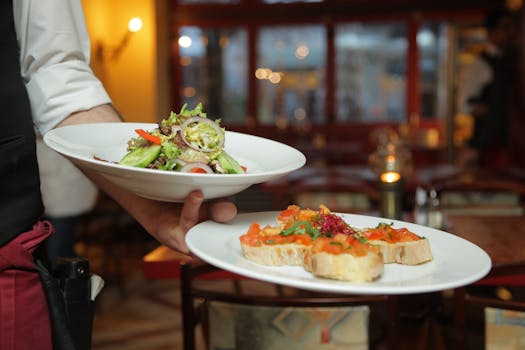Designing an Industrial-Themed Restaurant: A Step-by-Step Guide to Authentic Design
The industrial-themed restaurant has gained immense popularity in recent years, appealing to a diverse clientele with its raw aesthetics and unique ambiance. This design style, characterized by exposed brick, metal fixtures, and reclaimed wood, creates a warm yet edgy atmosphere that invites diners to enjoy their meals in a distinctive setting. In this article, we will explore the essential steps to designing an industrial-themed restaurant that is both authentic and appealing.
Understanding the Industrial Aesthetic
Before diving into the design process, it is crucial to understand what defines the industrial aesthetic. This style draws inspiration from warehouses, factories, and urban environments, emphasizing functionality and simplicity. Key elements include:
- Exposed Materials: Brick walls, concrete floors, and metal beams.
- Neutral Color Palette: Shades of gray, black, and brown, often accented with bold colors.
- Vintage Decor: Antique furniture, retro lighting, and salvaged items.
- Open Spaces: High ceilings and open floor plans that promote a communal dining experience.
Step 1: Choosing the Right Location
The first step in designing an industrial-themed restaurant is selecting an appropriate location. Look for spaces that already possess some industrial characteristics, such as:
- Old warehouses or factories
- Converted lofts or garages
- Buildings with exposed brick and large windows
According to a report by IBISWorld, the restaurant industry is projected to grow by 3.5% annually, making it essential to choose a location with high foot traffic and visibility to attract customers.
Step 2: Creating a Floor Plan
Once you have secured a location, the next step is to create a functional floor plan. An industrial-themed restaurant should prioritize:
- Open Layout: Encourage social interaction by minimizing barriers between dining areas.
- Flexible Seating: Incorporate a mix of communal tables, booths, and bar seating to accommodate different group sizes.
- Kitchen Visibility: Consider an open kitchen design that allows diners to see the cooking process, enhancing the dining experience.
Step 3: Selecting Materials and Finishes
The choice of materials is critical in achieving an authentic industrial look. Consider using:
- Reclaimed Wood: For tables, chairs, and wall accents, adding warmth and character.
- Metal Fixtures: Incorporate steel or iron elements in furniture and lighting.
- Concrete: Use for flooring or countertops to enhance the industrial feel.
Case studies, such as the success of the restaurant “The Smith” in New York City, demonstrate how the use of reclaimed materials can create a unique dining atmosphere while promoting sustainability.
Step 4: Lighting and Ambiance
Lighting plays a crucial role in setting the mood of an industrial-themed restaurant. Opt for:
- Exposed Bulbs: Use Edison bulbs or vintage-style fixtures to enhance the industrial vibe.
- Adjustable Lighting: Incorporate dimmable lights to create a cozy atmosphere during evening hours.
- Natural Light: Maximize window space to allow natural light to flood the dining area during the day.
Step 5: Incorporating Art and Decor
Art and decor can significantly enhance the industrial theme. Consider the following:
- Local Artists: Showcase artwork from local artists to create a sense of community.
- Industrial Artifacts: Use vintage machinery or tools as decor elements.
- Greenery: Incorporate plants to soften the hard edges of industrial design and improve air quality.
Step 6: Final Touches and Branding
Finally, ensure that your branding aligns with the industrial theme. This includes:
- Menu Design: Use a rustic design with a focus on locally sourced ingredients.
- Staff Uniforms: Consider uniforms that reflect the industrial aesthetic, such as denim aprons or work shirts.
- Signage: Use metal or wood for signage to maintain consistency with the overall design.
Conclusion
Designing an industrial-themed restaurant requires careful planning and attention to detail. By understanding the aesthetic, choosing the right location, creating a functional floor plan, selecting appropriate materials, and incorporating thoughtful decor, you can create a unique dining experience that resonates with customers. As the restaurant industry continues to evolve, embracing an industrial theme can set your establishment apart, attracting diners looking for authenticity and character. Remember, the key to success lies in creating a space that not only looks good but also feels inviting and comfortable for your guests.
